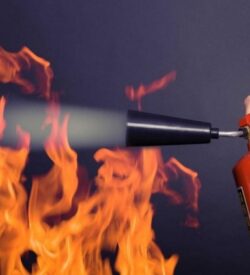TELEHANDLER TRAINING AND CERTIFICATION
The Telehandler Training and Certification course from Safety First Training is an OHSA based program that train the trainer in telehandler, also teaches pre-operation inspection, safe operation requirements including setup, operating and moving the machine along with hazard avoidance. Training is offered around Southern Ontario including Toronto, Mississauga, Brampton, Markham, Oakville, Burlington, Hamilton, Niagara, Kitchener, Waterloo, Cambridge. We also offer Train the Trainer courses for Telehandler.
Note – we do not provide public sessions for individuals
Want to take the Online course instead?
View Online CourseDescription
Telehandler Training and Certification Ontario
This Telehandler Training and Certification course identifies the knowledge, practical skills and evaluation requirements needed by telehandler operators. The practical evaluation requires the telehandler operator to demonstrate competency skill level equal or greater to the industry accepted measurements. This Telehandler Zoom Boom Operator Training and Lift Truck Training program is designed using the CSA B335-04 Safety Standard for Lift Trucks, the Ontario Regulation 851 for Industrial Establishmentsprogram is designed using the CSA B335-04 Safety Standard for Lift Trucks, the Ontario Regulation 851 for Industrial Establishments and the Ontario Regulation 213/91 Construction Projects.
Course Outline – Telehandler Training and Certification:
Introduction
Related Government legislation
Telehandler Safety Video
Responsibilities of the workers, supervisors and employers
Pre-operational checks
Inspection, maintenance, and records
Lift capacity and load limitations
Stability principles
Safe operating procedures
Hazard identification
Fuel sources
Theory and practical training assessments
Telehandler forklifts are commonly used in a variety of industries in Ontario, including construction, agriculture, and manufacturing. These versatile machines can lift heavy loads to high elevations and move them horizontally, making them an essential tool for many tasks. However, operating a telehandler forklift requires specialized training and knowledge to ensure safety for both the operator and those working in the surrounding area.
In Ontario, the Occupational Health and Safety Act (OHSA) requires that all workers who operate powered lift trucks, including telehandler forklifts, receive proper training and certification. This training should cover the safe operation of the machine, as well as important safety procedures such as inspecting the equipment before use and following proper lifting and moving techniques.
Proper telehandler forklift training can help prevent accidents and injuries in the workplace. This can include accidents such as tipping over due to an unbalanced load or colliding with other objects or people on the worksite. By understanding how to properly operate a telehandler forklift and follow safety protocols, operators can ensure that they are working safely and effectively.
In addition to the safety benefits, telehandler forklift training can also lead to increased productivity and efficiency on the job. A properly trained operator can work more quickly and effectively, completing tasks in a timely manner and reducing the risk of errors or accidents that could delay the work.
Telehandler forklift training is an essential component of workplace safety in Ontario. By ensuring that all operators are properly trained and certified, employers can create a safe and productive workplace for everyone involved.
Click here for Ontario Ministry of Labour Forklift inspection information.
Train the Trainer – Telehandler Forklift
Our professional Train the Trainer certification course for Telehandler Forklift allow our clients to learn how to teach OHSA based courses directly to their employees. When individuals or groups of employees need safety training, these train the trainer programs can be more cost effective than hiring outside training companies. We will train you to be an effective Telehandler Forklift safety trainer for your company.
Our Train the Trainer Course Package include:
- Professional Teaching Guide
- Participant Course Handout
- Evaluation Forms
- Wall Certificate template
- Instructor Course Presentation
- Course Test and Answer Key
- Course Video Supplement
- Wallet Card template
Tips for Telehandler Safety
Training
You must receive the proper Telehandler Training and Certification that includes both a theory course assessment and hands-on practical training on the telehandler you will be using. You must read the operator’s manual and understand the safety signs on the machine. You must also understand the function and location of all safety devices and controls before using the machine.
Rules and Regulations
Always adhere to your employer’s safety rules and jobsite regulations, as well as all applicable local government or provincial regulations that apply to telehandler operation before operating the machine.
Inspection and Tests
Always perform a pre-operation inspection and function tests on the machine before using the machine at the start of each shift. If there is anything wrong with the machine or a malfunction is discovered, you must notify your supervisor and make sure the machine is immediately tagged and removed from service until it can be properly be repaired.
Workplace Hazard Assessment
Perform a workplace hazard assessment prior to using the machine or moving the machine to the work area. Be aware and avoid hazards such as drop-offs and holes, slopes, slippery or unstable surfaces, overhead obstacles, power lines and any other hazards that may exist and develop a hazard assessment plan to avoid these hazards.
Load Capacity Chart
Never operate a telehandler if the load capacity chart is missing. It is imperative that the load chart in the telehandler matches the machine and the attachment you are using before lifting the load. Load charts must always be clear and visible to you while you are sitting in position.
Know your Load
The weight and centre of gravity of the load must never exceed the telehandler’s or attachment’s maximum capacity as identified on the load chart. Pre-determine the dimensions of the load and follow proper load handling techniques. Always ensure that the load is secure to minimize the potential for falling debris, injury or damage.
Personnel and Suspended Loads
If the telehandler is being used to lift personnel and suspended loads, you, your supervisor and your company must ensure that all provincial workplace laws are being met and that the telehandler and attachment manufacturer’s instructions regarding the additional requirements and operating instructions are being followed.
In the Cab
You must always wear your seatbelt while operating the telehandler. You must be positioned in your seat to easily reach steering wheel and all machine controls. Adjust your side and cab mirrors to maximize your visibility prior to moving the vehicle.
Stability Triangle
You must ensure that the combined centre of gravity of the telehandler and the load, always remains within the stability triangle.
Things to be aware of:
Make sure the chassis is on level ground level before handling a load and never use the sway feature with an elevated load.
Keep the boom and load as low as possible during travel.
Operate the machine at speeds that will keep the machine and load under control at all times.
Tipping Safety
If your telehandler tips over, do not jump from the machine. Remain in the cab, stay in the seat with your seat belt fastened, brace for impact by grasping the steering wheel and leaning away from the point of impact.
Safety – Always!
Always….
- Work in compliance with your provincial Occupational Health and Safety Regulations
- Read and follow your employer’s procedures for Health and Safety
- Read and follow any equipment Operator’s and Manufacturer’s Manual
- Wear proper Personal Protective Equipment (PPE)
- Adhere to equipment lifting capacity information and warning signs
- Conduct pre-shift inspections, pre-start up inspections, visual inspections
- Report the absence or defect in any equipment or protective device
- Test all equipment functions to ensure proper working condition
- Avoid hazardous situations, steep slopes, grades and drop offs
- Use the equipment for what is was intended and designed for
- Ensure you are properly trained and authorized to use the equipment
Click here for an Online course for Telehandler Training and Certification
Click here for a Telehandler Training and Certification video
Duration:
Up to 8 hours depending on participants’ experience levels
Assessment:
A passing grade of 75% is required in order to receive a certificate
Completion:
Upon successful completion of this course, participants will receive a PDF wall certificate and PDF wallet card for their records
Contact us today to learn more about the course and the topics covered.




